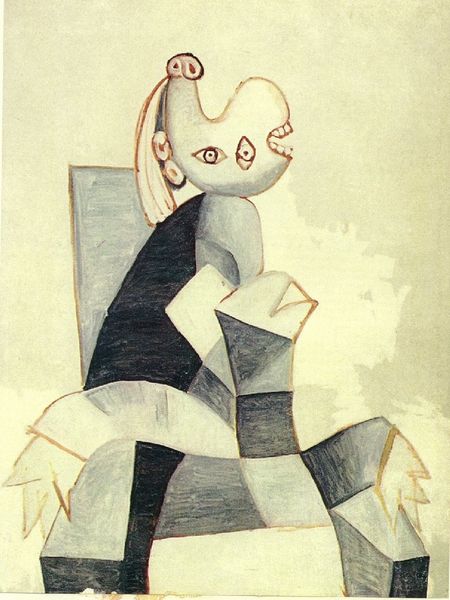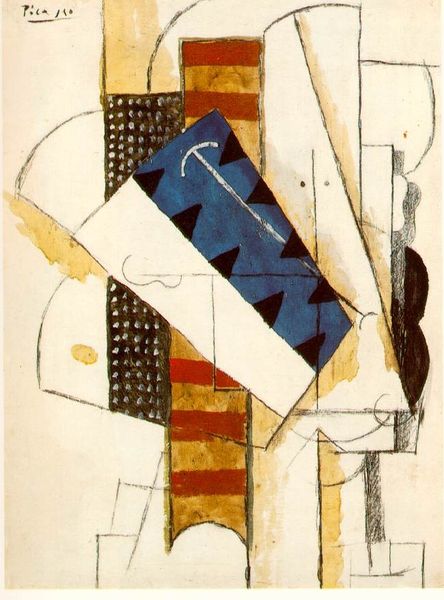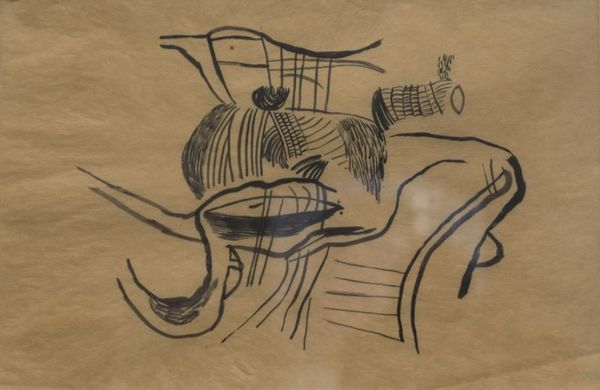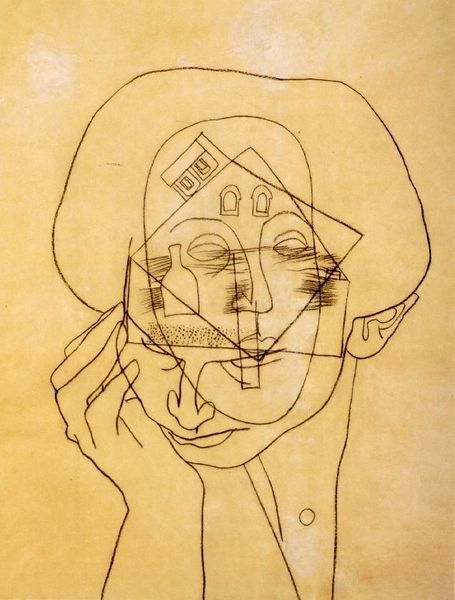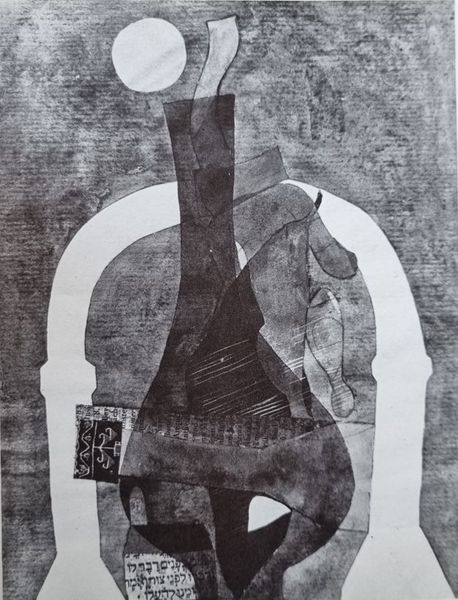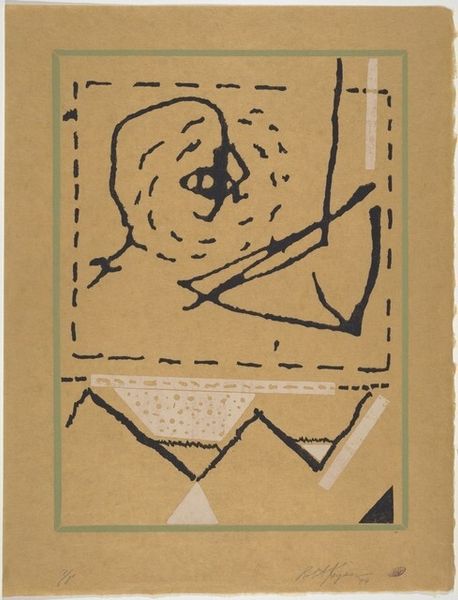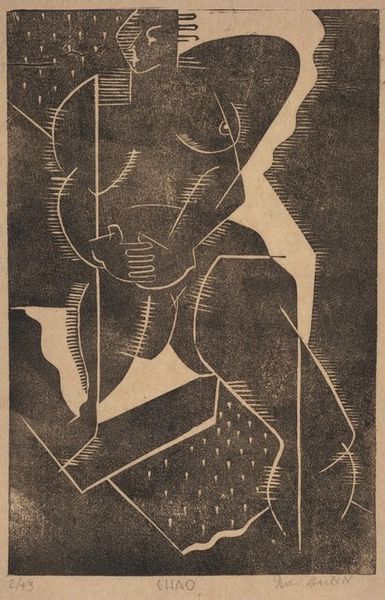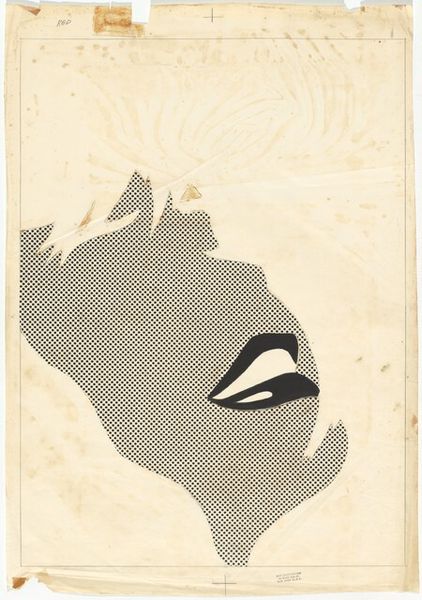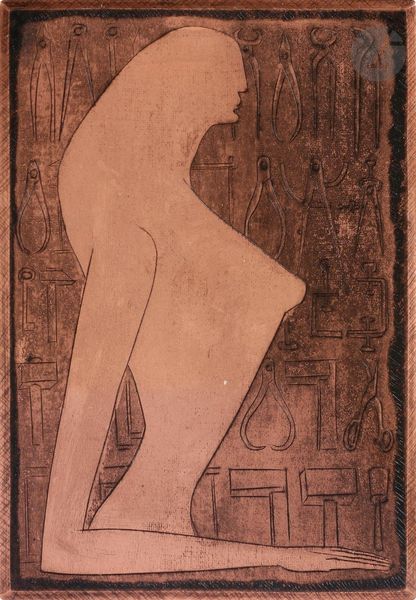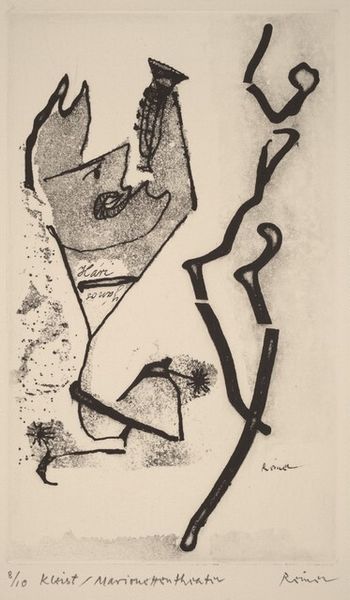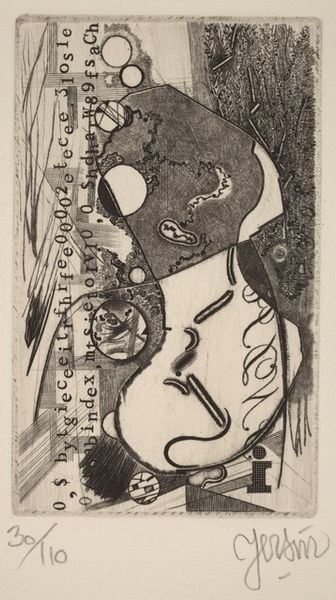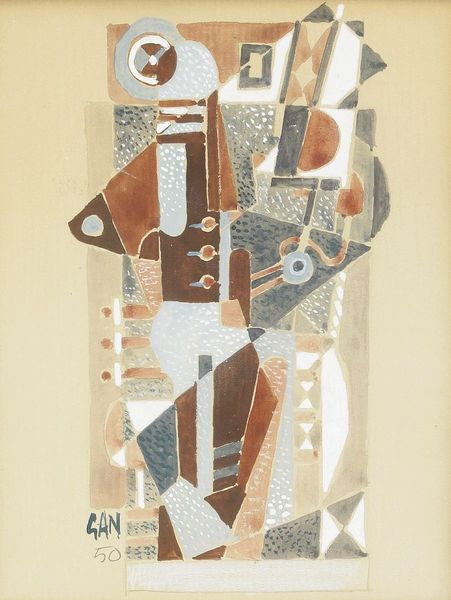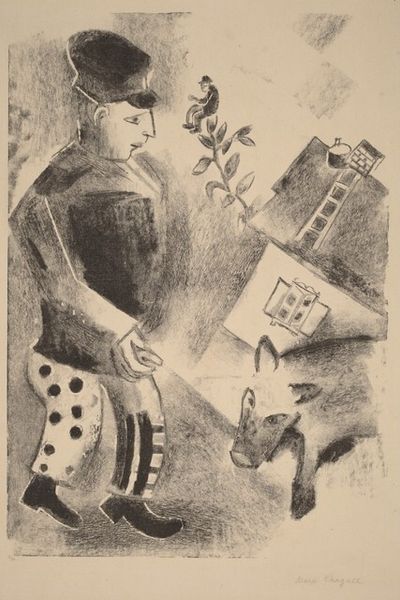
drawing, graphite
#
drawing
#
cubism
#
geometric
#
graphite
Dimensions: 111.7 x 144.8 cm
Copyright: Public domain US
Curator: Welcome. Here we have Picasso’s “Still Life with Guitar,” created in 1914, a drawing rendered in graphite. Editor: My immediate impression is one of fragmented melancholy, a kind of quiet disruption. The oval shape feels self-contained, almost like a mirror reflecting a broken reality. Curator: Indeed, the piece exemplifies synthetic Cubism, moving away from merely analyzing forms, but synthesizing them. Notice how the guitar is not represented realistically, but rather through geometric shapes and superimposed planes. Editor: And the timing is significant. 1914 marked the beginning of World War I, a period of immense social and political upheaval. Doesn't the fragmentation of the guitar mirror the fragmentation of European society at the time? The still life is almost like a memorial. Curator: It certainly reflects a shift in artistic expression. However, consider the formal elements. The contrast between the textured areas and the smooth lines, and the interplay of light and shadow…These create a dynamic tension that exists independently of any historical context. Editor: But can we truly separate the art from its context? Picasso wasn't working in a vacuum. The presence of "JOU" might reference "journal," perhaps hinting at the role of news and propaganda during wartime. It provokes thinking about how information is disseminated and perceived, especially during conflict. Curator: Perhaps. Although the use of text also alludes to early 20th-century trends such as the collages of Braque. Focusing on these formal elements can enrich our understanding by revealing how abstraction itself became a powerful visual language. Editor: But this visual language always has cultural significance, especially during an era of rapid change. Art becomes a form of resistance or a way of recording one's environment. Curator: Perhaps both aspects enhance our comprehension. Seeing this drawing, it reflects artistic creation existing as a commentary. Editor: I find that reading art offers such a rewarding synthesis of cultural experience, that art echoes life's complexities.
Comments
No comments
Be the first to comment and join the conversation on the ultimate creative platform.
